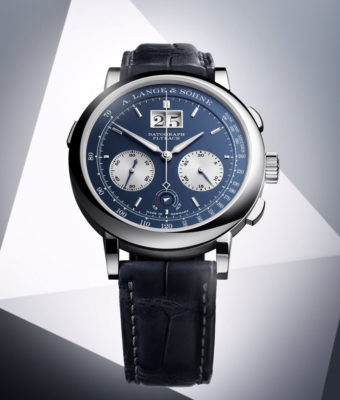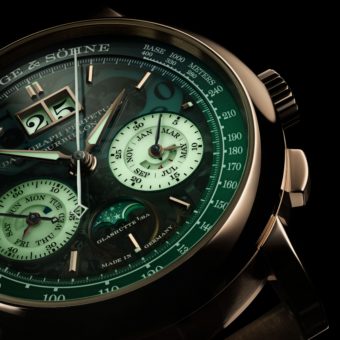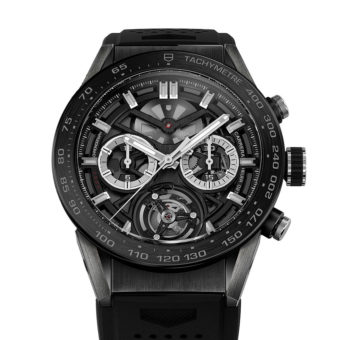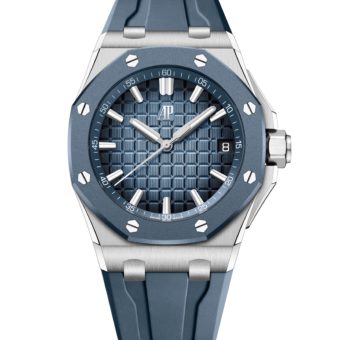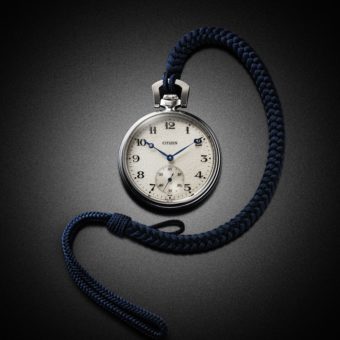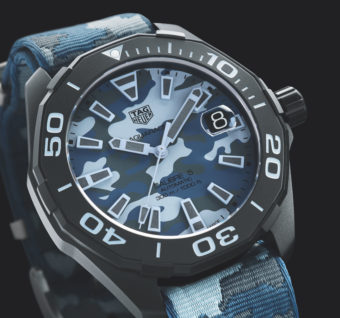
When watchmaker Jan Silva got his first glimpse of the innards of the A. Lange & Söhne Grande Complication 42500 pocketwatch, made in 1902, his heart sank. He saw that restoring them to anything resembling a working movement would be a Herculean labor.
The year was 2001. The watch had been brought to A. Lange & Söhne’s headquarters in Glashütte, Germany by a married couple at the request of the watch’s owner, an elderly ex-housekeeper who had received the watch more than 50 years earlier as a gift from her employer. The owner wanted to know if it were worth repairing: time had turned it into a gunked-up, rusted mess.
“Where there would normally be a complex, delicate mesh of bridges, springs and wheels, there was nothing to be seen but a gray-brown, amorphous mass,” Silva recalls in a book about the watch, entitled Grande Complication No. 42500, which A. Lange & Söhne published earlier this year.
The Grande Complication movement before work began.

Now, 5,000 man-and-woman-hours later, Silva and his four-person team at A. Lange & Söhne have restored the watch to mint condition, and it is in the midst of an A. Lange & Söhne-sponsored world tour with stops in New York, Tokyo, Hong Kong, Beijing and, finally, Glashütte.
The watch is a grand complication in the true sense of the term, meaning that it has a perpetual calendar, a split-seconds chronograph and a minute repeater (it also has grande and petite sonneries). It is the most complex watch ever to bear the name A. Lange & Söhne. (The original A. Lange & Söhne company, which made the watch, was dismantled after World War II. The modern-day A. Lange & Söhne was founded in Glashütte, the same town that was home to the original firm, in 1990.) The company says the Grande Complication has an estimated value at $2.3 million. In 1902, its first owner, a Viennese named Heinrich Schäfer, bought it for 5,600 gold marks, which, according to the Grande Complication book, is what a villa in nearby Dresden would have cost at the time.
The book gives a wheel-by-pinion account of its reconstruction. It’s a tale of serial setbacks. Just as Silva was ready to get to work, in August 2002, Glashütte was hit by a devastating flood. The Grande Complication was untouched by it, but Silva had to shift his attention to a group of historic pocketwatches, kept in a vault in the Lange building’s cellar, that had been damaged.
The movement took three months to dismantle. Screw heads had broken off, and Silva had to devise clever ways to remove the screws. Other parts were nearly inseparably stuck together by a mortar of rust and grime. “The whole job was like a detective’s search for clues,” he recounts in the book. “I exposed layer after layer, and some of the hidden components were so badly eroded that not even their shape could be reconstructed, let alone their function…”

He cleaned and kept as many of the 833 components as he could (most of the chronograph mechanism was beyond redemption); the rest he and his fellow watchmakers fabricated by means of spark erosion, painstaking milling, and hand-filing and polishing. He stamped the new parts “fecit 2004” on their undersides.
Not long after work began, Silva had to revise his estimate of the project’s duration: from one to three or four years (it ultimately took five).
He was already far behind schedule when he came to most difficult part, the gongs. He could find no guidance from any source as to how to recreate them. To remove the gongs’ rust, he consulted with restoration experts at Dresden’s famous Mathematics-Physics Salon, a museum containing antique timepieces and other measuring instruments, and decided to use a galvanic process. Once the gongs were clean, he saw they were so corroded they would need to be replaced. He fashioned new ones, a major task, in part because he couldn’t tell what the originals were made of. Once finished, the new gongs proved unruly, chiming arbitrarily and mistaking 10 o’clock for 11 o’clock. He solved the random-chiming problem; the 10 o’clock confusion cured itself.
On the original gong block, the piece of metal used to fix the gongs in place, Silva saw the initials “JAP.” They stand for Jules Audemars and Edward Piguet, founders of Audemars Piguet in Le Brassus. That company may in fact have made the entire movement, the book says. “It is possible that the whole raw movement was made there before being delivered to Germany, where it was improved by A. Lange & Söhne. At least, this was standard practice at that time, as most watch manufacturers in Europe procured raw components from Switzerland and then processed them further in accordance with their own ideas.”
In contrast with the movement, the watch case, made of rose gold, was nearly perfectly preserved. It was designed by the architect and industrial designer Carl Ludwig Theodor Graff, based in Dresden. The watch’s front cover bears the head of the goddess Minerva; the back is engraved with the initials “GS,” but whose initials they are no one now knows.

He or she probably couldn’t tell the 2010 version of the watch from the 1902 one: it has the same case, dial and crown. But the current owner will surely note the nearly $2.3 million difference the restoration has made. A. Lange & Söhne did the work free of charge; in return the owner merely had to lend the piece to the company for promotional purposes.



